The Lancia Delta Integrale stands as a testament to the transformative power of a single car within the world of rallying. With its innovative all-wheel-drive system, potent turbocharged engine, and unwavering commitment to performance, the Delta Integrale not only secured numerous championship victories but also forever altered the very fabric of rally racing.
This article embarks on a captivating journey through the evolution of the Lancia Delta Integrale, unraveling the story of how this extraordinary vehicle reshaped the landscape of motorsport and captured the hearts of enthusiasts worldwide.
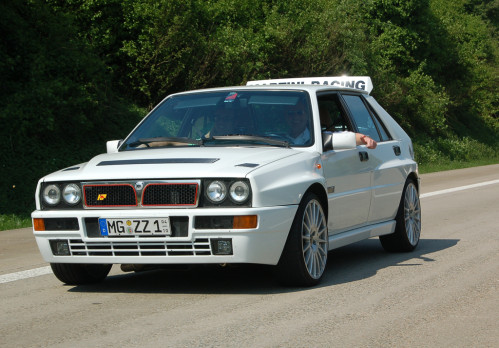
Painful and Tragic Stages Preceding The Appearance of the Legend
We start in the early 80s with the preparation of the first rally cars at Lancia.
It all started with the Lancia 037
This is the Lancia 037, a fragile and graceful Group B car built by the Italians specifically for rallying. In 1983, this car helped Lancia become the world champion among manufacturers. However, in 1985, the first troubles of Group B started with it: during the French rally Tour de Corse, the Lancia of Italian Attilio Bettegi went off the road and crashed into a tree. Unfortunately, the safety frame of the car was made of too flimsy aluminum tubes and left no chance for the pilot to survive.
A year later, at the May Tour de Corse rally, Lancia introduced a new all-wheel drive model, the Delta S4, designed to replace the outdated 037.
The Rise and Fall of the Delta S4
The Delta S4 featured a four-cylinder engine with nearly 600 horsepower (447 kW) at a mere 950 kilograms (approximately 2094 pounds).
Although the car bore some resemblance to the production Lancia Delta hatchback, it was a pure mid-engine racing prototype with no connection to the road-going Lancia. With Finn Henri Toivonen behind the wheel, this car had a strong chance of regaining the title, which had gone to Audi and then Peugeot in previous years. However, on the second day of the rally on May 2, 1986, the Delta S4 veered off the narrow roads of Corsica and plunged into an abyss. Due to the car’s layout, Henri Toivonen and navigator Sergio Cresta were positioned directly above the gas tank. Tragically, they burned to death before they could escape the car.
The Ban on Group B and Transition to Group A
This incident became the catalyst for the ban on the fast and dangerous Group B. Many fans and drivers at the time believed it would spell the end of the World Rally Championship. In the ’70s, cars had become progressively faster, gradually diverging from their production counterparts. However, by 1982, the rapid Group B cars were replaced by slower, more mass-produced models. This transition meant the end of mid-engine layouts, carbon fiber bodies, and large anti-wings, among other hardcore engineering features.
Yet, the challenge facing engineers did not diminish. In just half a year, they needed to create, test, and build new Group A cars that closely resembled their production counterparts in design. This required identifying a suitable production car. In the past, Lancia had shown the capability to achieve this.
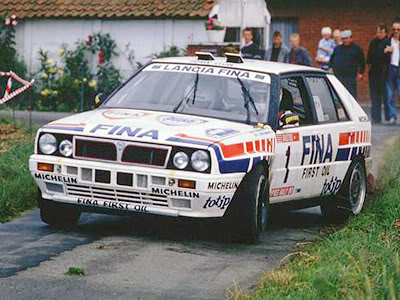
The Legacy of the Lancia Fulvia Coupe HF
Although the Lancia brand might not be well-known to many today, it was known for producing intriguing cars. Among them, the Lancia Fulvia Coupe HF played a pivotal role in rally history. Initially, it was a relatively modest coupe with an 1100 cc engine. However, thanks to the efforts of the HS Quadro Corsa department, led by Cesare Furio, it was transformed into a competitive rally car. Sporting four cylinders and a 1.6-liter engine producing 113 horsepower (84 kW), the Fulvia Coupe HF secured numerous victories up to the early ’70s. Notably, it laid the foundation for the legendary Stratus, as the first prototype was based on Fulvia components.
Even the HF moniker, initially associated with the High Fidelity sports division, found its origin on the Lancia Fulvia. Gianni Lancia, the son of the brand’s founder, proposed the elephant emblem for the sports division, reasoning that an elephant does not accelerate rapidly. However, once it gains momentum, nothing can stop it.
While victories in the ’60s could be achieved with relatively ordinary, nearly stock coupes boasting slightly more than a hundred horsepower, by the late ’80s, such attributes were insufficient.
Unfortunately, none of the road-going Lancias at the time could serve as a suitable basis for a successful rally car. The production Lancia Delta, for instance, resembled the Russian Lada Samara: a boxy, front-wheel-drive hatchback with a base engine producing 75 horsepower (56 kW). Introduced in 1979, the Delta had already started showing signs of obsolescence by 1986.
Lancia’s Pursuit of Innovation: Delta HF 4WD
However, Italian engineers persisted in revitalizing the Delta. In 1982, they presented a concept for an all-wheel-drive and more powerful Turbo Delta. In 1986, they unveiled the serial version, named the Lancia Delta HF 4WD.
This launch transpired a month before the Corsica tragedy, which led to the Group B ban. As a result, the engineers at the Abarth factory, where racing Lancias were constructed, had a foundation to build upon. You could say that they were fantastically lucky:
- compact size,
- lightweight,
- hatchback body,
- four-wheel drive,
- three differentials (front, rear, and center)…
This concept formed the basis for the most successful rally car, securing six consecutive design titles. More significantly, it established the blueprint for a Group A rally car. Prior to ’87, this concept was not well-understood.
Audi experimented with the Audi 200 sedan, which was not only massive but also heavy and underpowered. Ford took experimentation even further, introducing two Sierra variants: a powerful rear-wheel-drive version and another with all-wheel drive but equipped with a low-power engine.
The Japanese manufacturer Mazda offered an all-wheel-drive model, but it lacked sufficient power. Meanwhile, reigning champion Peugeot withdrew from rallying altogether. Lancia demonstrated that the ideal rally car was a compact, all-wheel-drive hatchback featuring a turbo engine generating around 300 horsepower (224 kW). Nevertheless, officials responsible for rule-making aimed to limit this power figure.
However, power initially posed a challenge. Engineers managed to extract only about 250 horsepower (186 kW) from the aging Fiat Twincam engine. Pilots accustomed to 600-horsepower machines in Group B found this adjustment quite a shock.
Markku Alen remarked, “…and I feel like I don’t have an engine! I said: What do you mean?! What am I doing here! Two weeks ago I had 600 power at 950 kilograms, and now I have about 250-270 ‘horses’ at somewhere around 1200 kilograms. It’s like night and day.”
Lancia’s Strategic Move: Negotiation and Triumph
Initially, Lancia planned to produce 1000 all-wheel-drive Delta HF units per year. However, to homologate the rally car, they needed to build 5000 of them.
Consequently, the Italians had to significantly ramp up production. Yet, even with this effort, they were unable to manufacture five thousand cars by the beginning of ’87, when the Monte Carlo rally was scheduled.
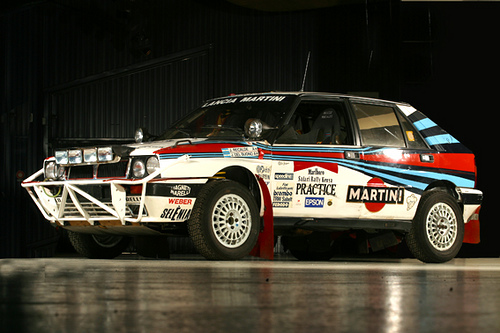
Nonetheless, as history has shown, Lancia’s managers, including the aforementioned Cesare Fiorio, were adept negotiators. They convinced sports officials that they possessed sufficient parts to assemble the remaining cars at a later time.
The Italians found relief in their rivals’ challenging circumstances. Thus, at the ’87 Monte Carlo Rally, Lancia’s dominance was overwhelming: Mickey Bison and Juha Kankkunen secured the top two positions. In this year, Lancia experienced only three losses: to Mazda in Sweden, Audi in Kenya, and BMW M3 in Corsica.
BMW M3 emerged as another remarkable ’80s car, albeit solely rear-wheel drive, limiting its competition to tarmac. By the year’s end, the Italians comfortably clinched the team championship, with Finn Juha Kankkunen earning the individual title.
It’s Time for Lancia Delta Integrale
Lancia recognized that their advantage stemmed not only from the Delta’s excellence but also from their rivals’ unpreparedness. Lancia understood that competitors would eventually catch up and surpass them, necessitating the Delta’s improvement. Addressing the car’s shortcomings became a priority, particularly concerning engine power, cooling, and wheel arches that constrained wheel and suspension size. Consequently, in the second year of its performance, Abarth unveiled the new version: the Lancia Delta Integrale.
Delta Integrale: Evolution and Legacy
The Delta Integrale featured broader wheel arches to accommodate 16-inch rims, enhanced braking capabilities, increased suspension travel, a 6-speed transmission (replacing the previous 5-speed), improved cooling, and handling.
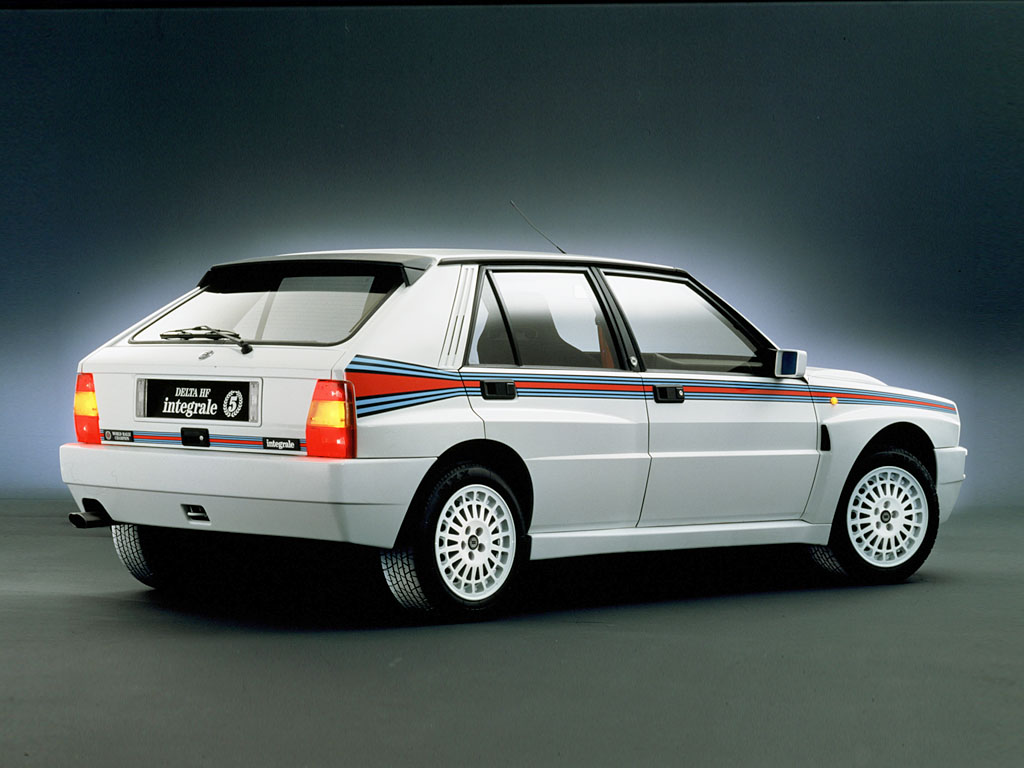
Over time, the 8-valve, 250-horsepower (186 kW) engine was replaced with a 16-valve variant, rumored to reach nearly 400 horsepower (298 kW) by the end of its run. The Group A version ultimately outpaced the Group B cars it replaced on specific tracks.
Birth of Icons: Lancia’s Influence on Road Cars
Within five years, Italian Mickey Bison and Finn Juha Kankkunen each secured two championship titles. The Delta, donning Martini colors, became synonymous with successful rally cars.
These triumphs resonated in the road models as well. Per Group A regulations, modifications made to a racing car had to be homologated on a road car first.
Thus, road-going versions like the Mitsubishi Lancer Evolution and Subaru Impreza WRX STi were born. Nevertheless, the first of these, the Lancia Delta, was most iconic.
Transformation of a Family Car: Lancia Delta’s Evolution
Initially a modest family car with a Fiat Ritmo engine, the Delta transformed into a captivating hot hatchback with four circular headlights, wide arches, large wheels, and a spoiler added since ’92.
Despite dating design-wise by the end of the ’80s, the Delta’s style endured, in part because angularity remained characteristic of supercars even into the early ’90s.
Amid Delta’s continued success, Lancia was forced to extend manufacturing of the car for another five years beyond the original plan.
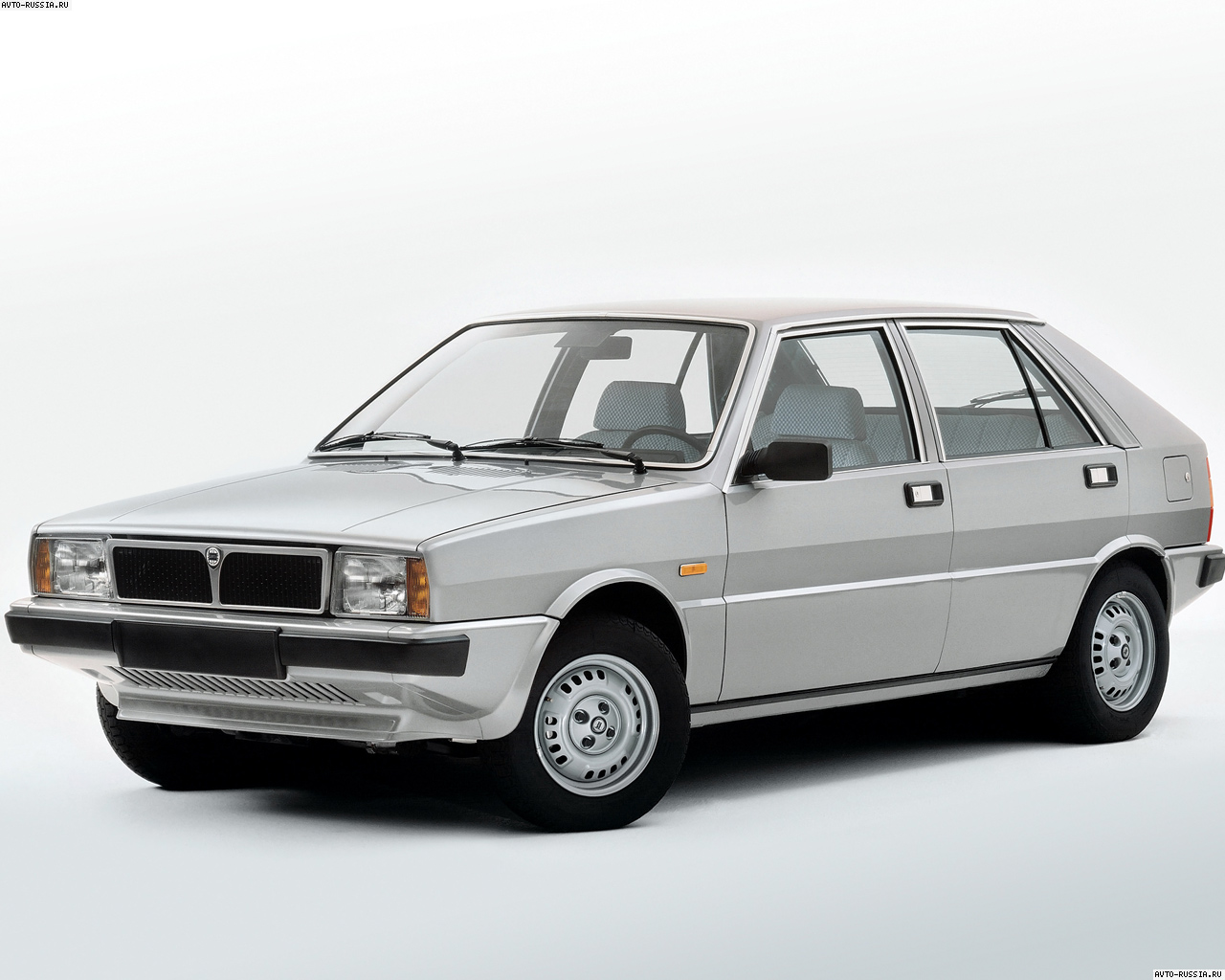
True, the road-going Delta did not boast the 360 horsepower (268 kW) of its rally counterpart. It featured around 200 horsepower (149 kW, depending on the version). Nevertheless, this car offered an engaging driving experience.
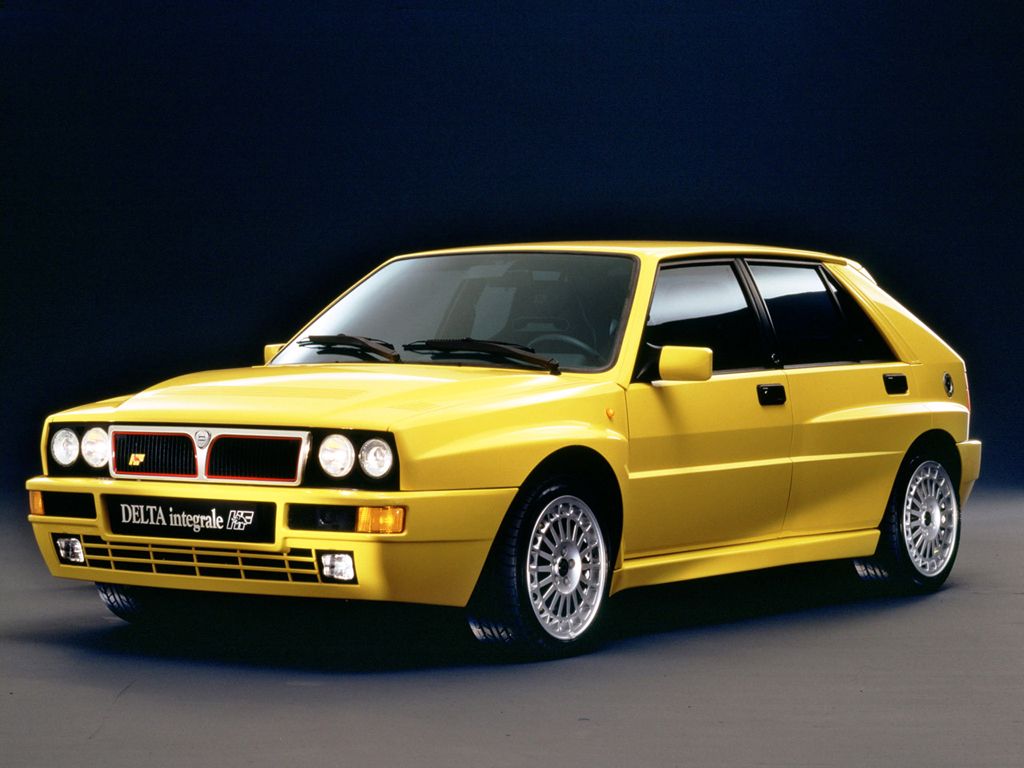
Igor Asanov (car reviewer): “When I press the throttle in the Delta Integrale and hear that frantic turbine whistle, feeling the acceleration, it’s as if I’ll see the Martini Racing lettering on the sides of my white car, hurtling along a rally circuit, and I’m in flight.”
Why Not Red?
By the way, a humorous anecdote emerged from the car’s iconic coloring during the Sanremo rally of ’89. In honor of the new 16-valve Delta version, Lancia and Martini unveiled a red variant of the livery. However, after a single rally, its use was discontinued. Red cars proved less visually distinct on the front pages of Italian sports newspapers, which were predominantly black and white at that time.
The Climax and Farewell: Delta’s End and Lancia’s Future
In 1991, Juha Kankkkunen once again clinched the world championship with the Delta. Despite the HF Integrale Evoluzione’s latest version, the car retained a limitation imposed by its ’80s framework: limited space under the hood and challenges in increasing suspension travel.
The Turning Point and Lancia’s Decline
Nevertheless, the car continued its comprehensive modernization. Electronic differential controls were introduced, enhancing cornering performance.
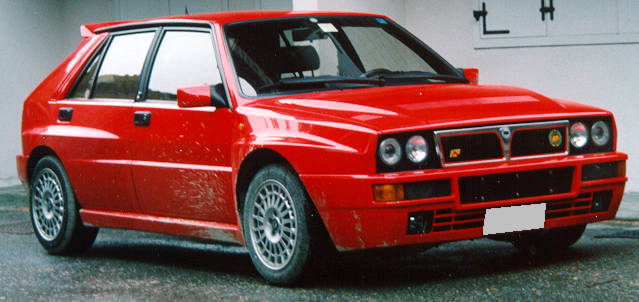
Furthermore, prototypes featuring a semi-automatic transmission and four-wheel steering were explored. While the clutch-less Delta eventually made its rally debut (albeit under the banner of the satellite team Jolly Club), the semi-steered car remained a prototype.
Unfortunately, the proposed production of 5000 Delta units with four-wheel steering was deemed unfeasible.
The car, in its existing form, remained competitive. However, in late 1991, Fiat announced the cessation of support for the Jolly Club. Concurrently, Didier Oriol, the driver, revealed his contract with Toyota. This moment marked a turning point, and the season’s previously impeccable performance faltered.
A flat tire during the Sanremo Rally, engine failure in the UK Rally, and the subsequent loss of the championship to Sainz signaled a shift in the Delta’s fortunes.
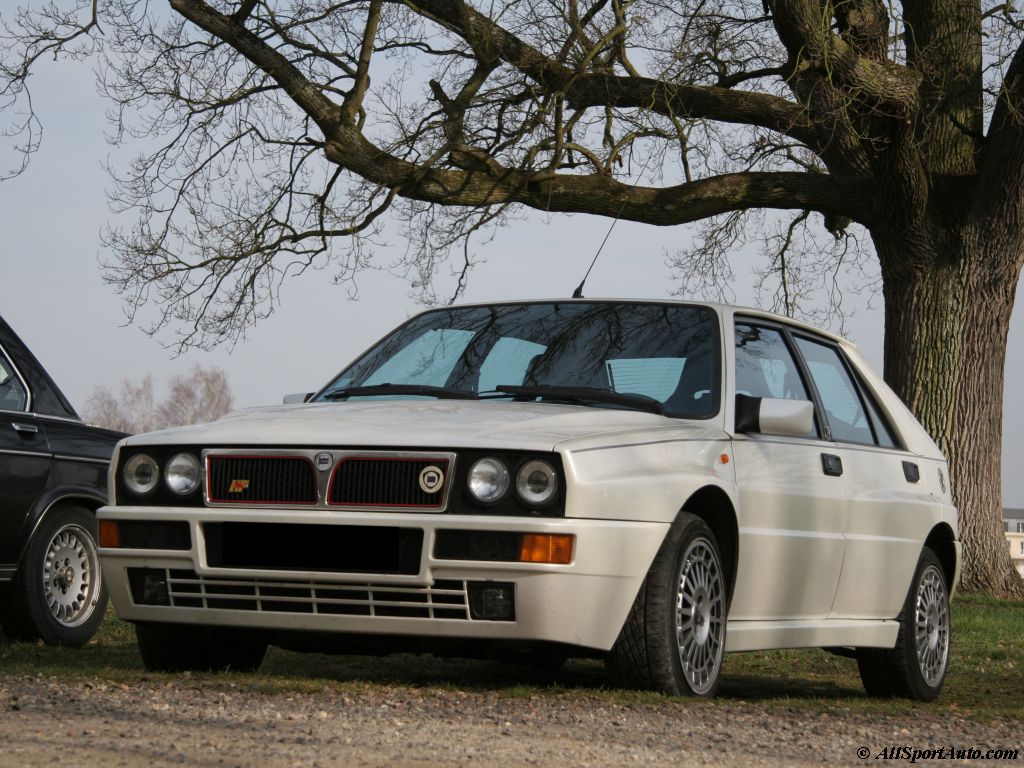
The Last Victory
It might appear that the Delta possessed a vivacious, unpredictable character, akin to its southern Italian heritage, seeking retribution. Nevertheless, Lancia drivers collectively earned enough points to secure the 6th (and final) championship title in the team standings, against a newer car that would win the next two world championships, reigning until the era of Subaru and Mitsubishi.
The magnitude of an individual is measured by their ability to overcome formidable adversaries.
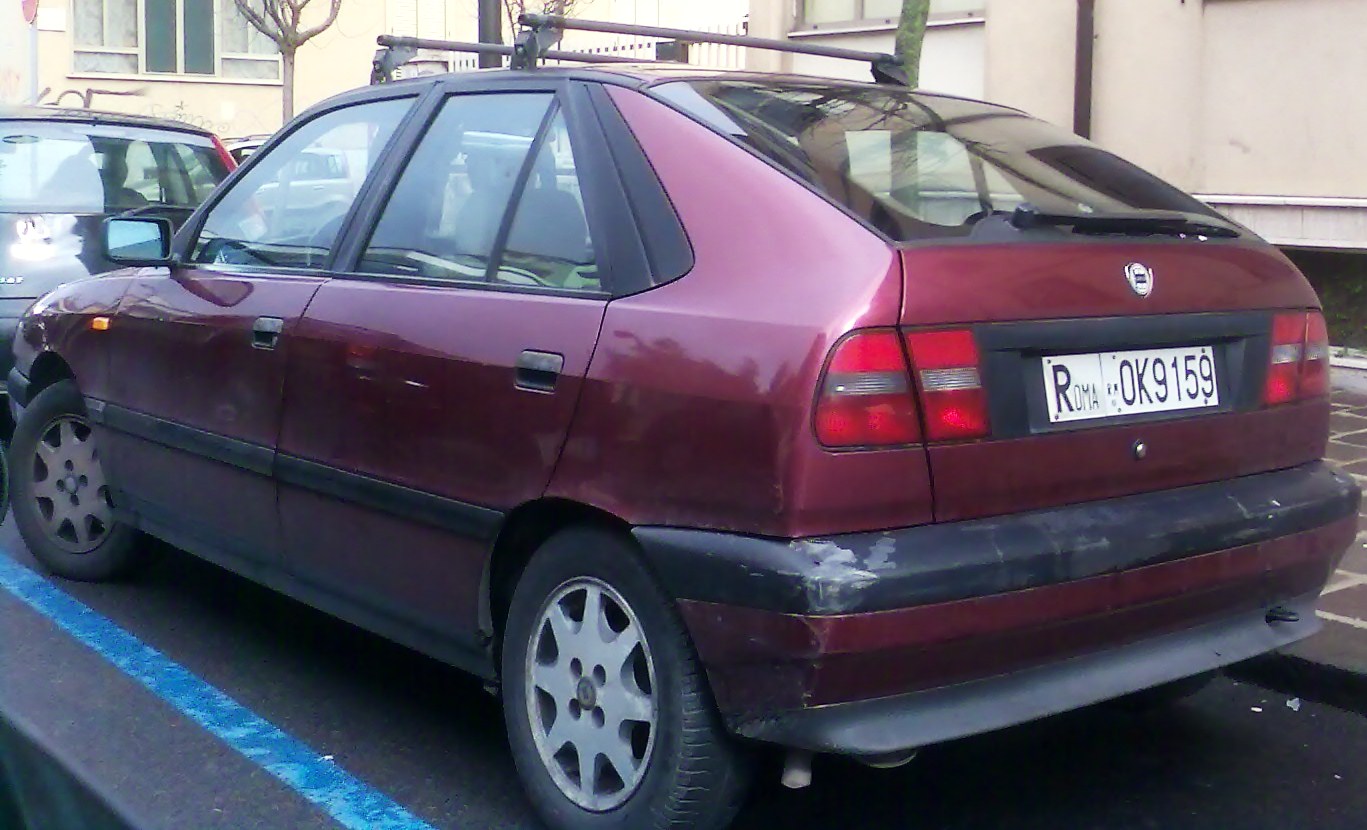
Lancia Delta II
Production of road-going Delta Integrale models persisted until 1994. Although a prototype of the 3rd evolution was crafted at the Maggiora factory where the Integrale was assembled, it never reached production.
Farewell to the Legend
Today, the Delta Integrale no longer claims the title of the fastest machine. It falls behind the more modern Lancer Evolution and Subaru Impreza STi in terms of speed and precision. Brake performance can sometimes be a concern with this car. Nevertheless, the Delta Integrale possesses a unique charm.
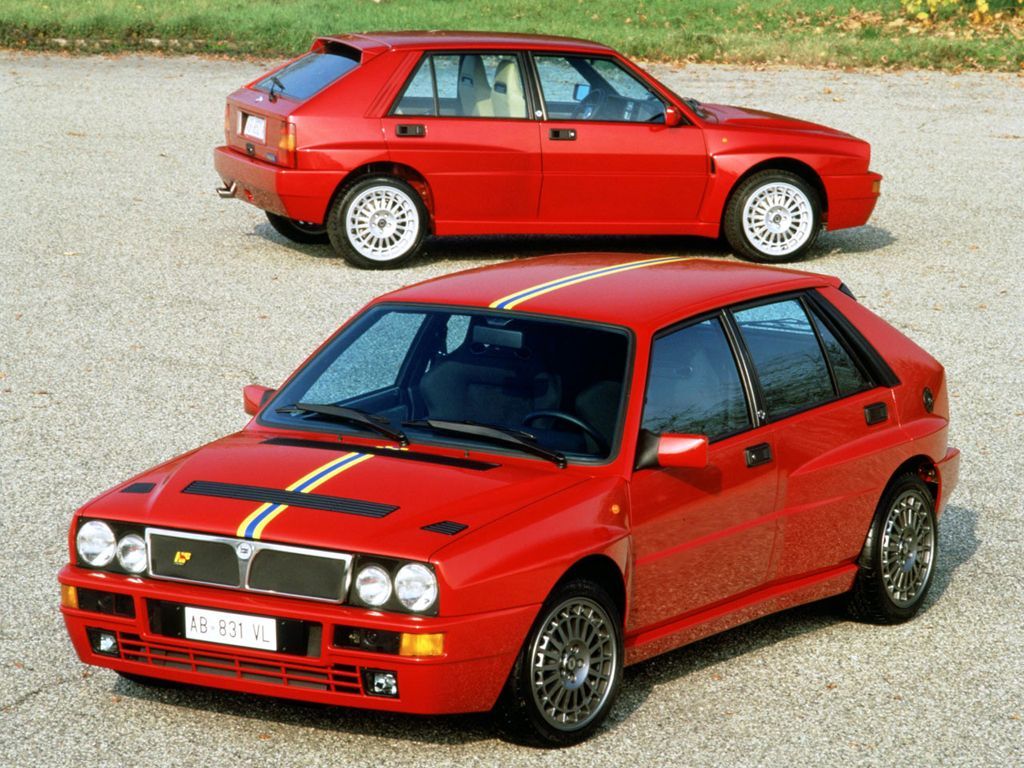
In fact, it is even more “analog” than the Lancer TME. The Delta Integrale creaks, squeaks, and snorts, conveying every sensation of the ride directly to the driver’s senses. Its interior evokes the design of Soviet Lada models from the ’80s, even emitting a similar scent.
Lancia Delta Integrale Today: Exhibit on Wheels
Crucially, driving the Delta Integrale on a daily basis has become largely impractical. Replacement body parts for the Lancia Delta Integrale are nearly impossible to obtain. These components have long ceased production, rendering new purchases or even used acquisitions a challenge. Consequently, any Delta Integrale found today is primarily a collector’s item, a testament to the Italian brand’s illustrious history that has now reached its conclusion.
While the Lancia brand technically endures, its existence is precarious. The Lancia lineup currently comprises a sole model, the urban hatchback “Ypsilon,” which has remained in production for over a decade. It seems that with the withdrawal from motorsport, an essential vitality began to wane from Lancia, potentially heralding the brand’s final years.
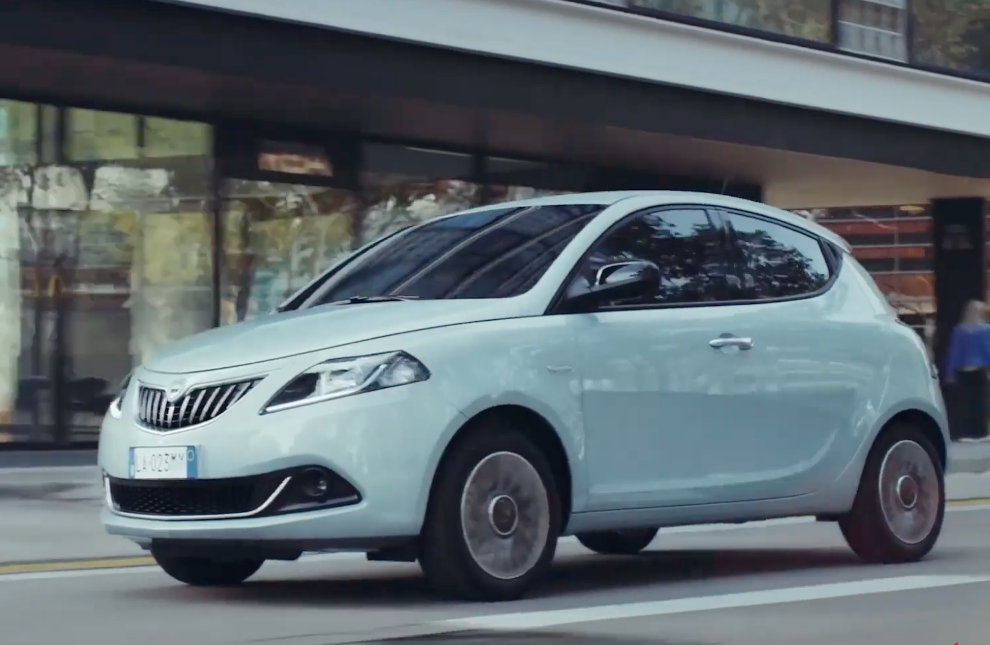
Lancia Ypsilon 2023
P.S.: I express my deep gratitude to Igor Asanov for his work and general contribution to the education of motor sports.